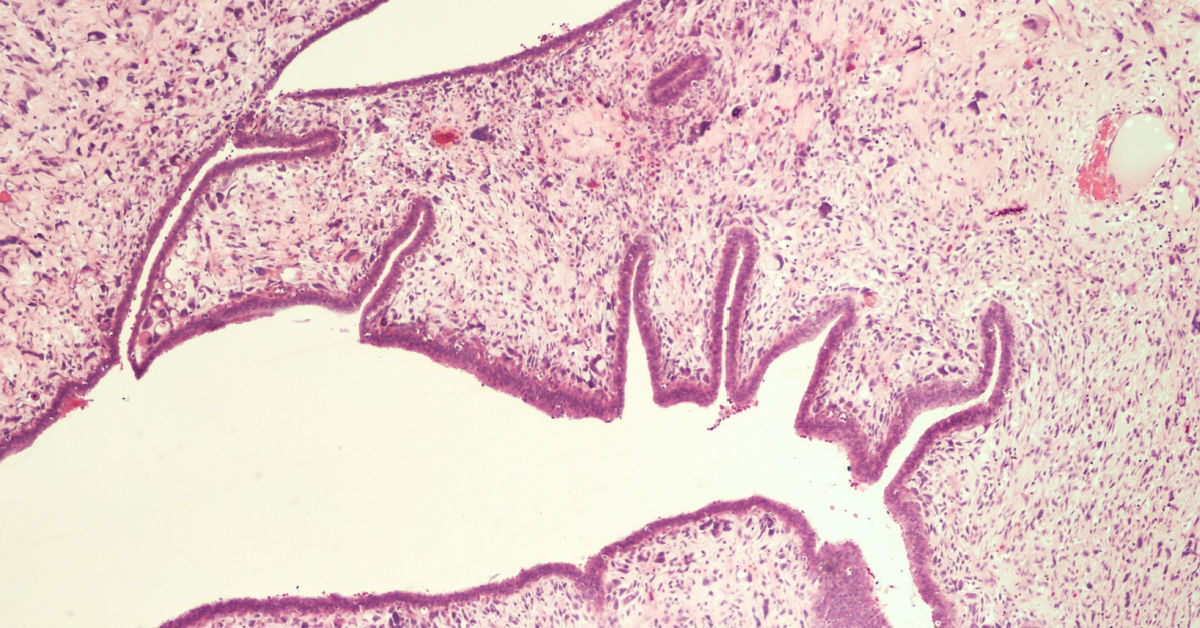Phyllodes Tumor (Breast): Symptoms, Causes, Treatments and Diagnosis


Overview
Numerous newspapers, magazines, and online articles greatly emphasize breast care and self-diagnosis for breast cancer. But these articles do not shed light on lesser-known breast conditions. One of them is a phyllodes tumor.
It is a rare, mostly non-cancerous tumor that affects the breast’s connective tissues. The connective tissue is known as the stroma. This blog explains phyllodes tumors, their causes, symptoms, and various treatment options.
What is a Phyllodes Tumor?
The breast is largely made up of fatty tissue that makes up most of the breast and the glandular tissues responsible for producing milk. However other connective tissues are also present. They are the fibrous tissues that are responsible for supporting and holding other tissues in place. These connective tissues are known as the stroma.
When a tumor grows from the stroma, it is called a phyllodes tumor. It is a rare tumor of the breast. It is mostly benign but may have the potential to become cancerous. Sometimes, these tumors are between benign and cancerous, and doctors consider such types of the tumor as borderline. These tumors can grow rapidly. But once they spread, it becomes challenging to treat.
The meaning of phyllodes is leaflike. As the tumor grows, it looks like a shape of a leaf under the microscope. It is unlikely to spread beyond the breast. It is also called cystosarcoma phyllodes.
What are the Causes of a Phyllodes Tumor?
The causes of a phyllodes tumor are unknown, and experts are investigating the same. Some experts believe that a protein called endothelin-1 contributes to an increase in fibroblast growth, and hormonal imbalance plays a role along with the following risk factors:
- Trauma
- Pregnancy
- Lactation
- Excessive estrogen
What are the Symptoms of a Phyllodes Tumor?
Like most breast tumors, you can also feel the phyllodes tumor, or your doctor may notice the lump during a regular check-up. The tumor is not painful. The lumps are hard, smooth, and well-defined, typically growing 3 centimeters or more in width in a few weeks or months. In some cases, it can stretch your skin, causing ulcers in the breast. It is also seen that the tumor generally appears more in the left breast than in the right.
If you have cancerous tumors, the symptoms appear as follows:
- Extreme fatigue
- Issues breathing
- Pain in the bone – indicating that cancer has metastasized to the bone and lungs.
When to Seek Medical Help?
If you are experiencing the symptoms of a phyllodes tumor, you should immediately contact your doctor or visit the nearest hospital.
Request an appointment at Apollo Hospitals
Who is at Risk of Developing a Phyllodes Tumor?
You can develop a phyllodes tumor at any age. However, you are at a higher risk of developing cancer, if you are:
- A woman in her 40s
- Suffering from an inherited genetic condition known as Li-Fraumeni syndrome
What are the Various Types of Diagnosis For a Phyllodes Tumor?
The first sign of a phyllodes tumor is the lump. It is the same with other types of breast cancer. Therefore it becomes challenging for doctors to diagnose a phyllodes tumor accurately. The following are some of the various types of diagnostic tests:
- Mammogram: If your doctor suspects phyllodes tumor, you may need a mammogram. These tests show detailed images of the lump with a clearly defined shape. Your doctor may also notice tiny pieces of calcium inside the lump.
- Ultrasound: Similar to a mammogram, an ultrasound shows pictures of the lump. This test uses sound waves to show images.
- Needle biopsy: In this, your doctor inserts a needle to collect a small tissue sample from the lump. It is later sent for analysis to confirm the diagnosis.
- Lump removal: Most patients undergo this procedure to get an accurate diagnosis. Your doctor surgically removes the entire lump and examines the tissue to check if it is a benign, borderline, or malignant cancer.
What are the Different Treatment Options for a Phyllodes Tumor?
All phyllodes tumors, benign or otherwise, can grow and cause pain and other issues. Therefore, your doctor may recommend surgery to remove it. The doctor may also remove healthy tissues around the tumor to ensure it doesn’t spread further. Based on the size and your preference, you can opt for any of the following surgeries:
- Lumpectomy : The doctor removes your entire tumor with a minimum of one centimeter of healthy tissue.
- Partial mastectomy : If you have a large tumor, your doctor may decide to remove the part of the breast that contains cancer. It is known as a partial mastectomy.
- Total mastectomy : As the name suggests, your doctor removes the entire breast. During the same surgery, you can opt for breast reconstruction surgery, or you can opt for the same after total mastectomy surgery.
If you have a malignant tumor, your doctor may prescribe the following treatment options after surgery :
- Radiation therapy: The doctor high energy waves to kill cancer cells that have remained after surgery.
- Chemotherapy: In this, your doctor uses different medications to kill the cancerous cells. Your doctor opts for chemotherapy when the tumor has spread to other body parts.
Conclusion
Although the phyllodes tumor is usually not cancerous, there is a high chance that it may return within two years of surgery. Therefore, frequent and regular medical checks are needed for early detection of a phyllodes tumor.
Frequently Asked Questions (FAQs)
Is it required to undergo surgery for a phyllodes tumor if it is benign?
Yes, benign or otherwise, these tumors can grow and cause extreme pain. Therefore, doctors recommend surgical removal.
If diagnosed with a malignant tumor, is it curable?
A malignant tumor that is contained in the breast and has not spread to other body parts is easy to treat, prevent, and curable. However, if it has spread to other parts, it can become challenging.





